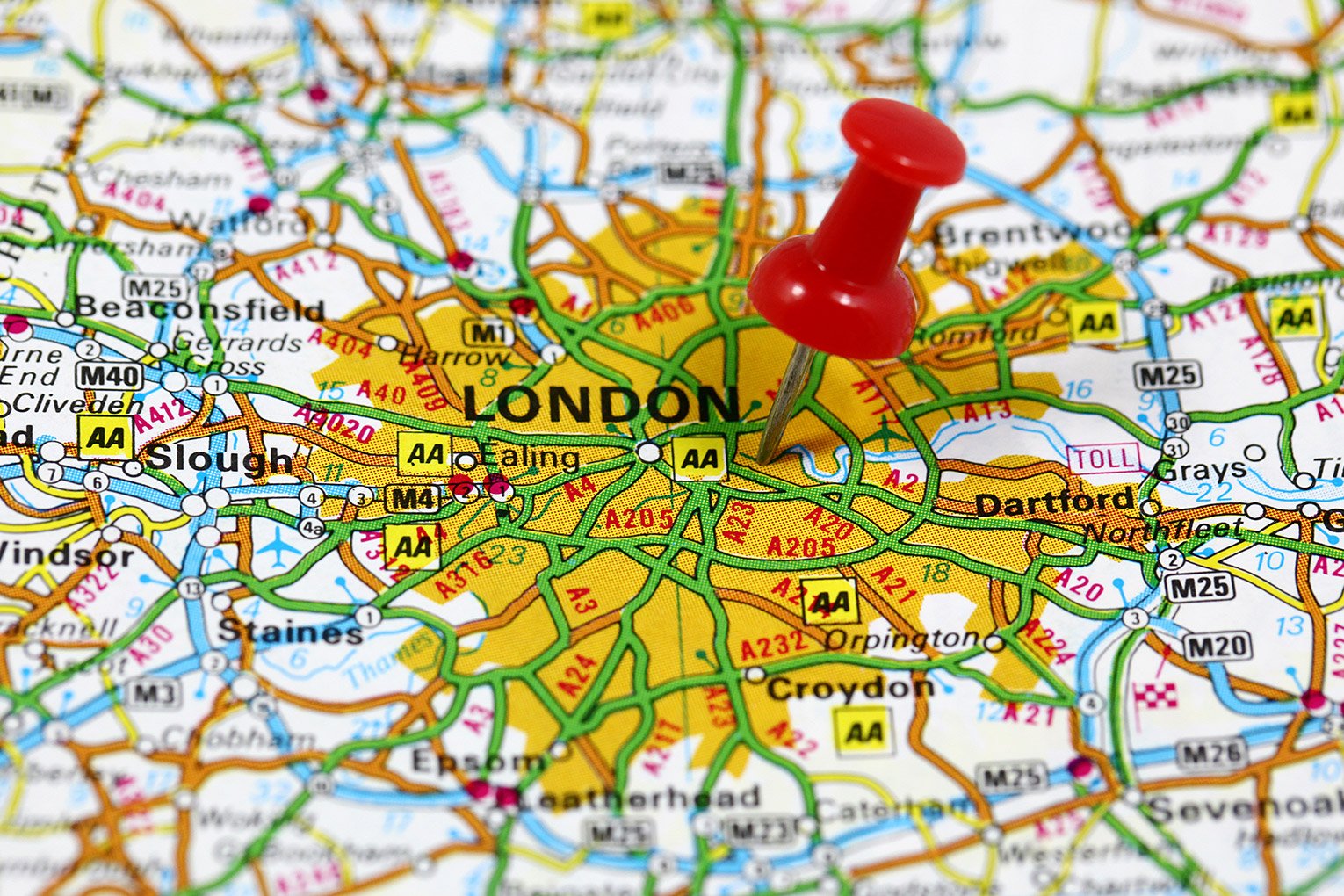Stirling Ackroyd’s latest London Hubs Tracker has found that while London has avoided any indication of widespread house price falls, negative price growth has hit the capitals’ traditional ‘prime’ market.
Price drops have been confined to the top 25% of London’s property market – which saw negative quarter-on-quarter growth of -0.6% in Q4 2015, or annualised house price falls of 2.4%.
Areas within the W postal area include Kensington High Street (W8) which experienced the most precipitous quarter-on-quarter decline of 3.1%, or an annualised rate of falling house prices reaching 11.8%. Despite this drop, the area still boasts an average house price of £1,779,000 and follows a local 0.5% rise in W8 property prices (2.0% annualised) in the previous quarter, highlighting the recent change in fortunes of the area.
Notting Hill (W11) and Chiswick (W4), also within the W area, also saw large quarter-on-quarter property price falls, of -2.6% (-10.0% annualised) and -1.9% (-7.3% annualised) respectively, taking average prices here to £1,523,000 and £952,000. In third place with property price falls of 2.4% QoQ (down 9.2% annualised) is NW3, centred on Hampstead.
However, Stirling Ackroyd said that if London’s old luxury postcodes are excluded, the remaining three quarters of the capital saw a 2.0% rise over the same period – or annualised house price growth of 8.2% for the overwhelming majority of London’s more ‘normal’ neighbourhoods.
Across the board, house prices in the capital rose by 1.6% in Q4 2015 – with the average London property now worth £533,000. As a broad average this translates to a 6.6% annualised growth rate for the whole of Greater London.
Out of a total 272 postcode districts in the capital, 47 saw local drops in average property values (a 17% minority). However 32 of these districts – 68% – fall within London’s traditional ‘prime’ top quarter of the property market (by absolute value).
Within the top quarter of London’s property market, a given postcode has a roughly 50:50 chance of hosting falling house prices (48% of 67) whereas for the rest of the capital a given postal district has a 93% probability of price rises.
Andrew Bridges, managing director of Stirling Ackroyd, said: “Luxury no longer means profit – or at least you can no longer presume so. London’s hugely diverse property market is undergoing a serious readjustment, with the traditional old heart of ‘prime’ London under pressure from many fronts – from a low global oil price and China’s economic slowdown, to stamp duty reform and international fears of Brexit.
“Yet for most of London’s communities, these factors affecting luxury buyers are less important. There are still too few new homes coming onto the majority of the market compared to demand from a growing population – and the majority of the London market is still in tune with, and restrained, by those fundamentals. Anyone who thinks that London property is synonymous with international jet setters is only looking at a very small part of what London has to offer.
“There is also an outwards wave of interest, away from the old peaks of property prices. Within the wider spread of London home buyers, a growing band of increasingly affluent people can no longer afford the most overcrowded traditional areas of ‘prime’ London – and this demographic of professionals are redefining the map of the capital’s up-and-coming locations. New, dynamic parts of London are emerging further east, driven by a less traditionally exclusive but highly aspirational clientele.”
Eastern Soho’s W1D district has led the whole of Greater London for residential property price growth – as prices rose 7.2% between Q3 and Q4 2015 to reach £1,162,057. If this were to continue, it would represent an annualised pace of 32%. Following this, western Soho (W1F) is not far behind, recording a 7.0% quarter-on-quarter rise in local residential property values.
In outer London, Sutton’s SM1 has seen property values jump by 5.2% quarter-on-quarter, matching Croydon’s CR9 district. This amounts to an annualised rate of 22.6% and takes property values to £345,000 in CR9 and £391,000 in SM1. Close behind, the average home in Tottenham’s N17 has seen its value rise by 4.9% on a quarterly basis (21.3% annualised) to stand at £446,000.
Bridges said: “Soho outperforming the likes of Kensington or Notting Hill would have seemed absurd not so long ago. But this is a sign of a changing city – and a changing property market.
“Soho has always seemed at odds with more conventional parts of the West End, offering a vibrant culture more in tune with East London. It now seems to be making a break for freedom with house price growth outpacing its underperforming next-door neighbours. And further afield, a wave eastwards seems to be accelerating – showing the changing nature of momentum across the capital. This surge in prices proves not all of London is refusing to slow down, or take a breather – the rest of the capital is racing ahead.”




